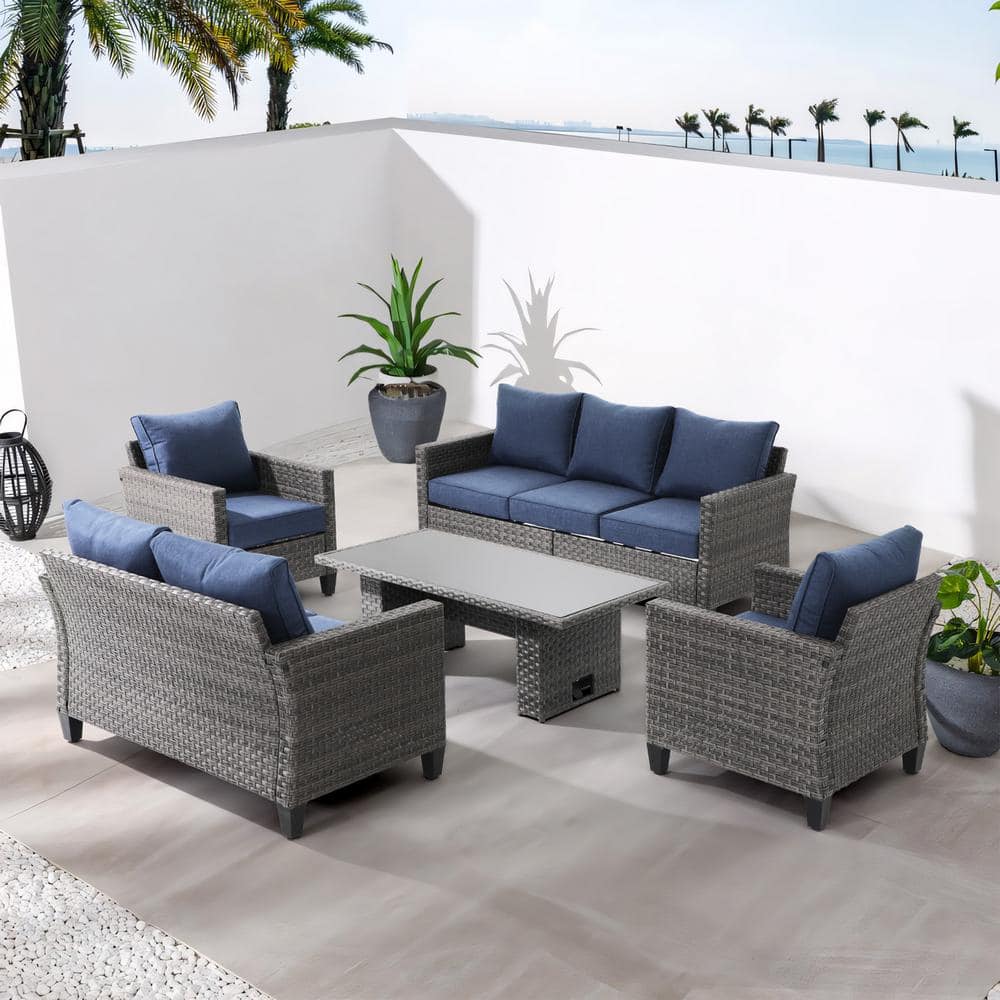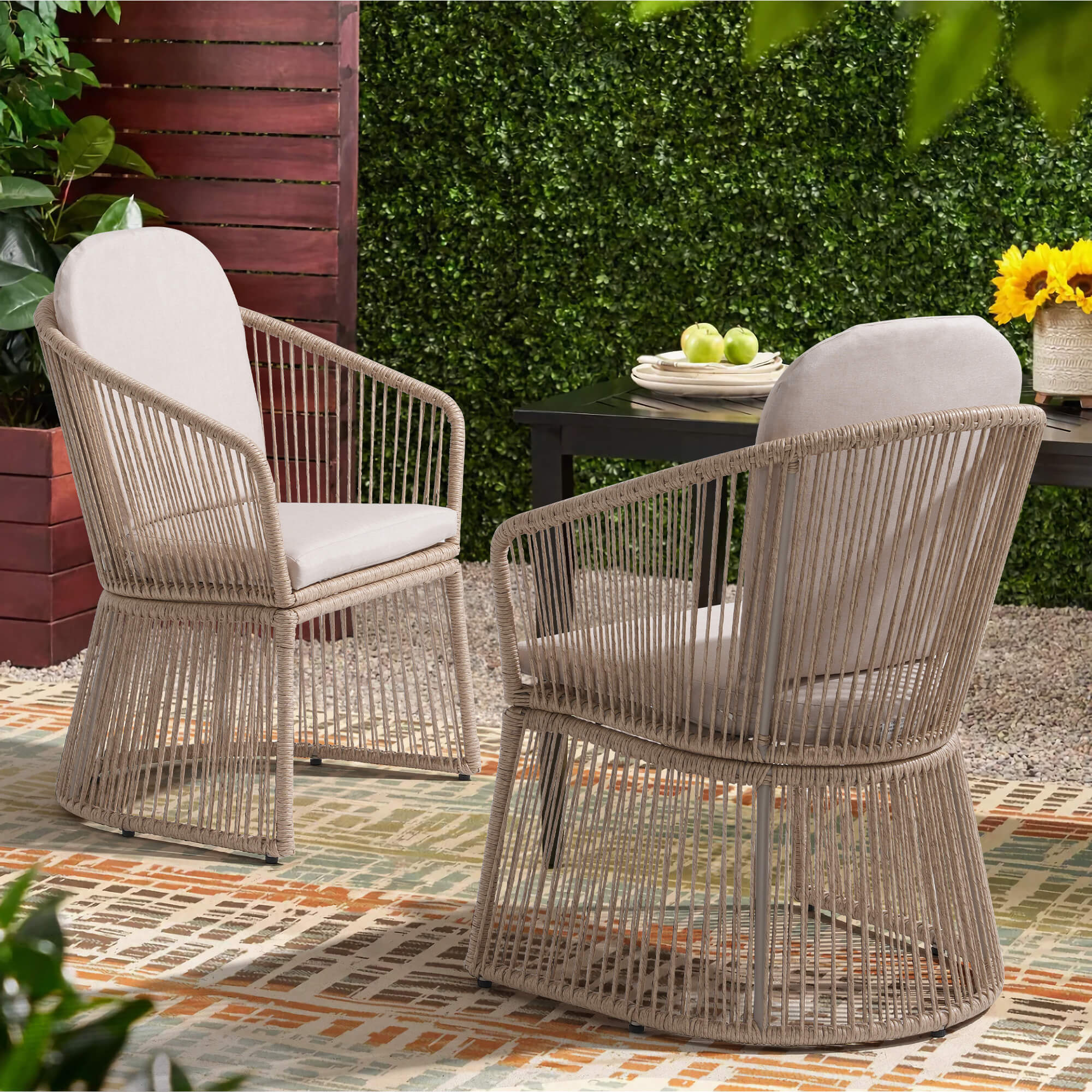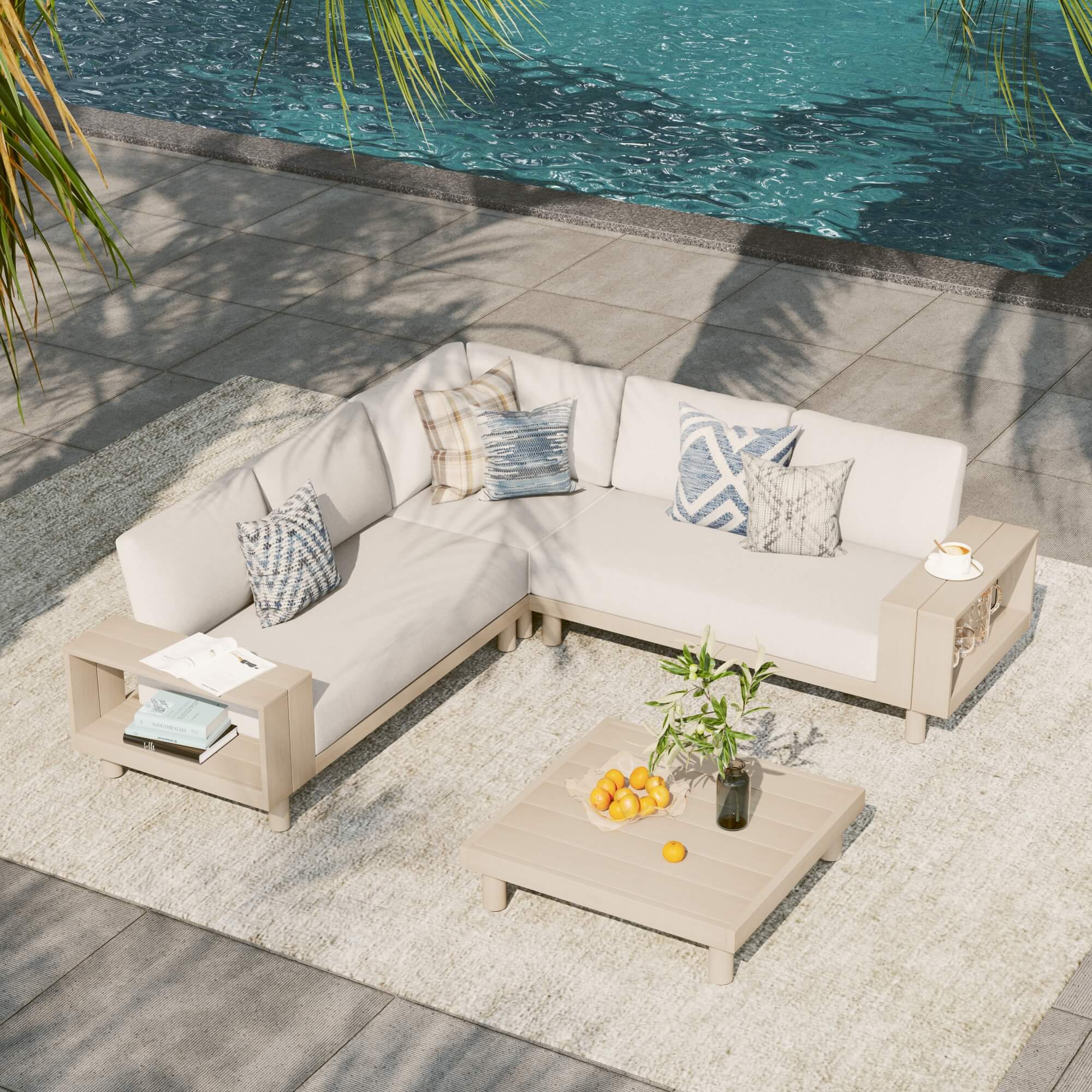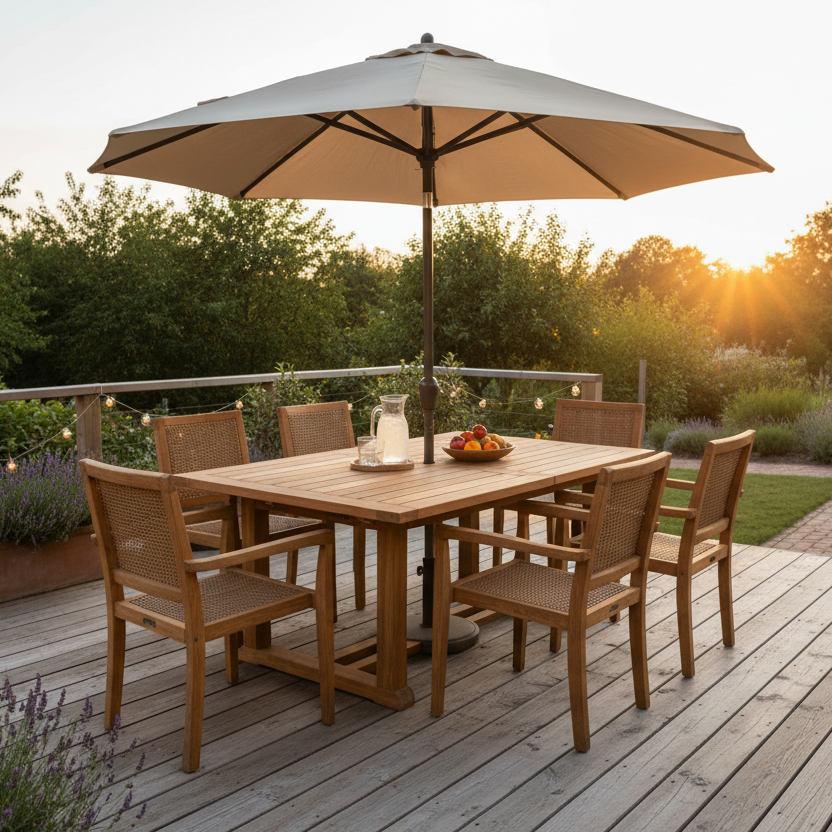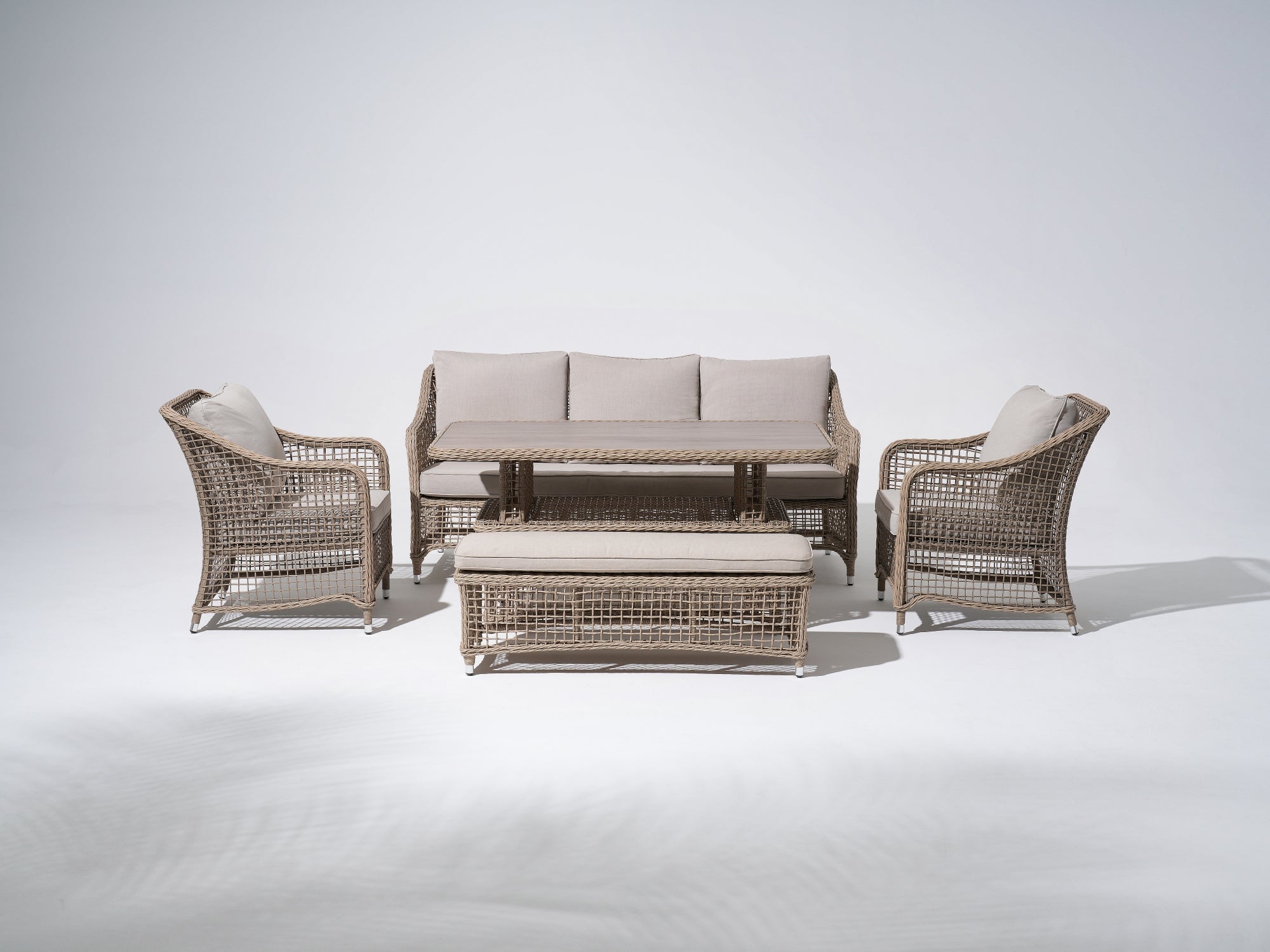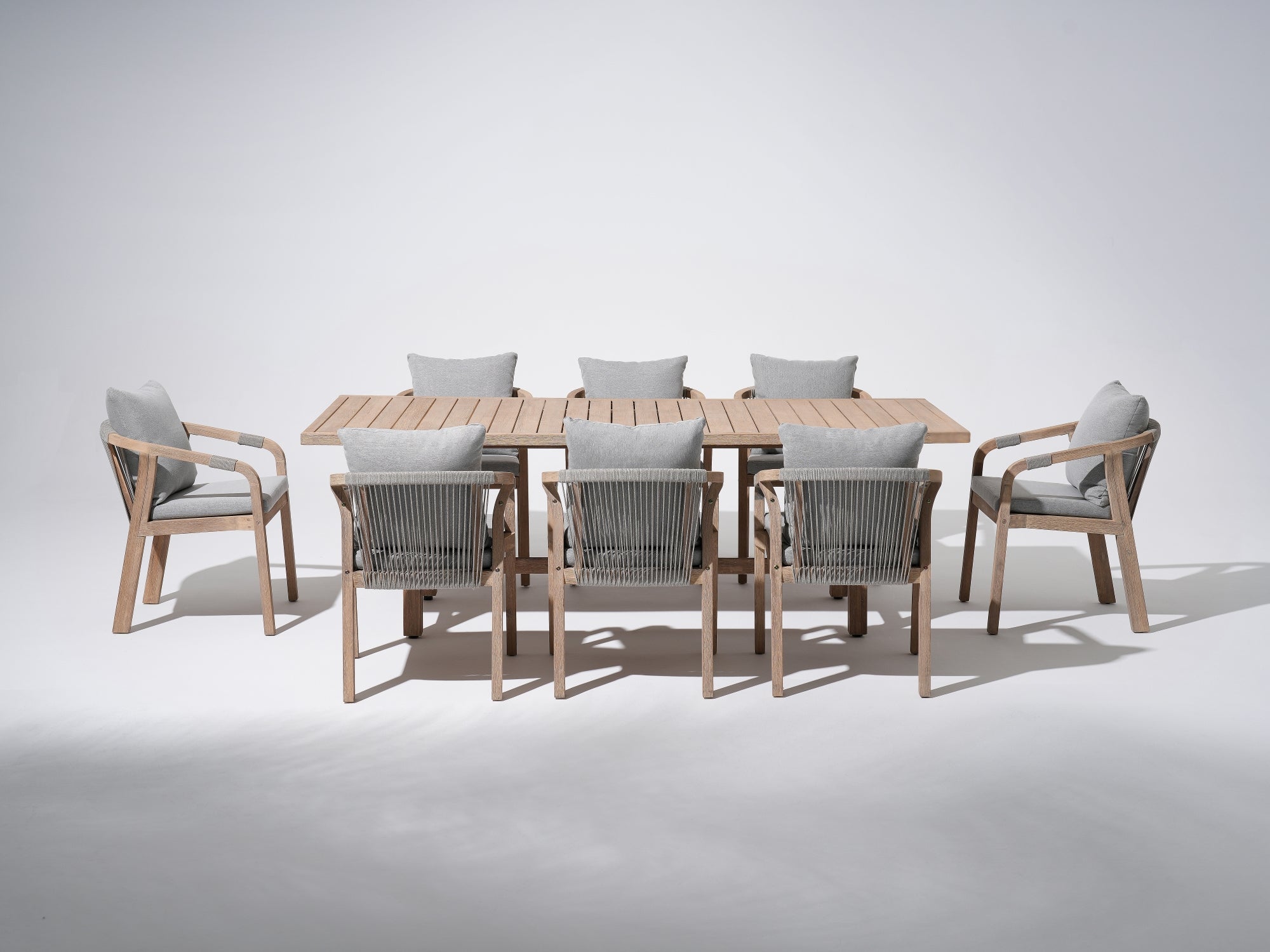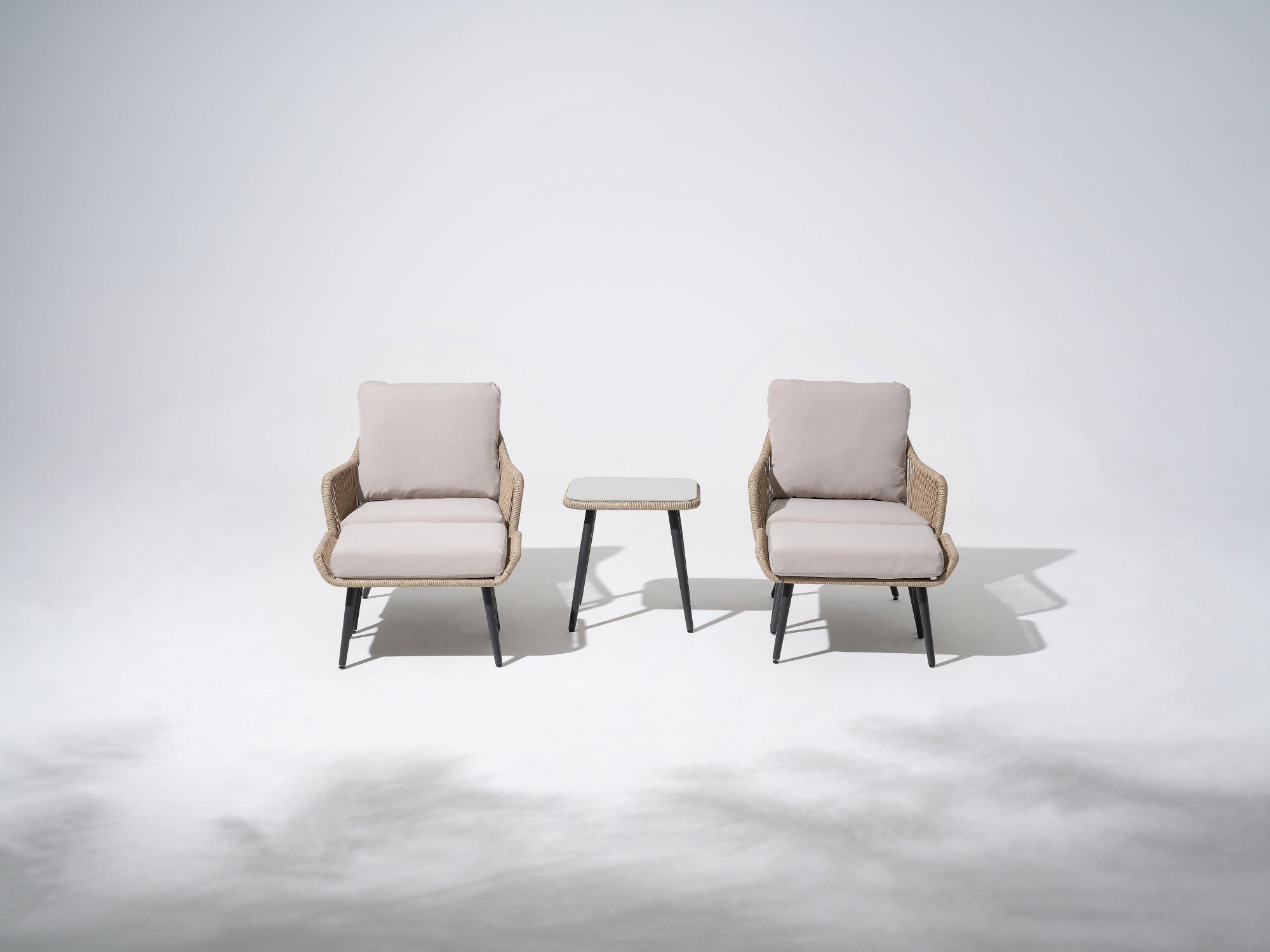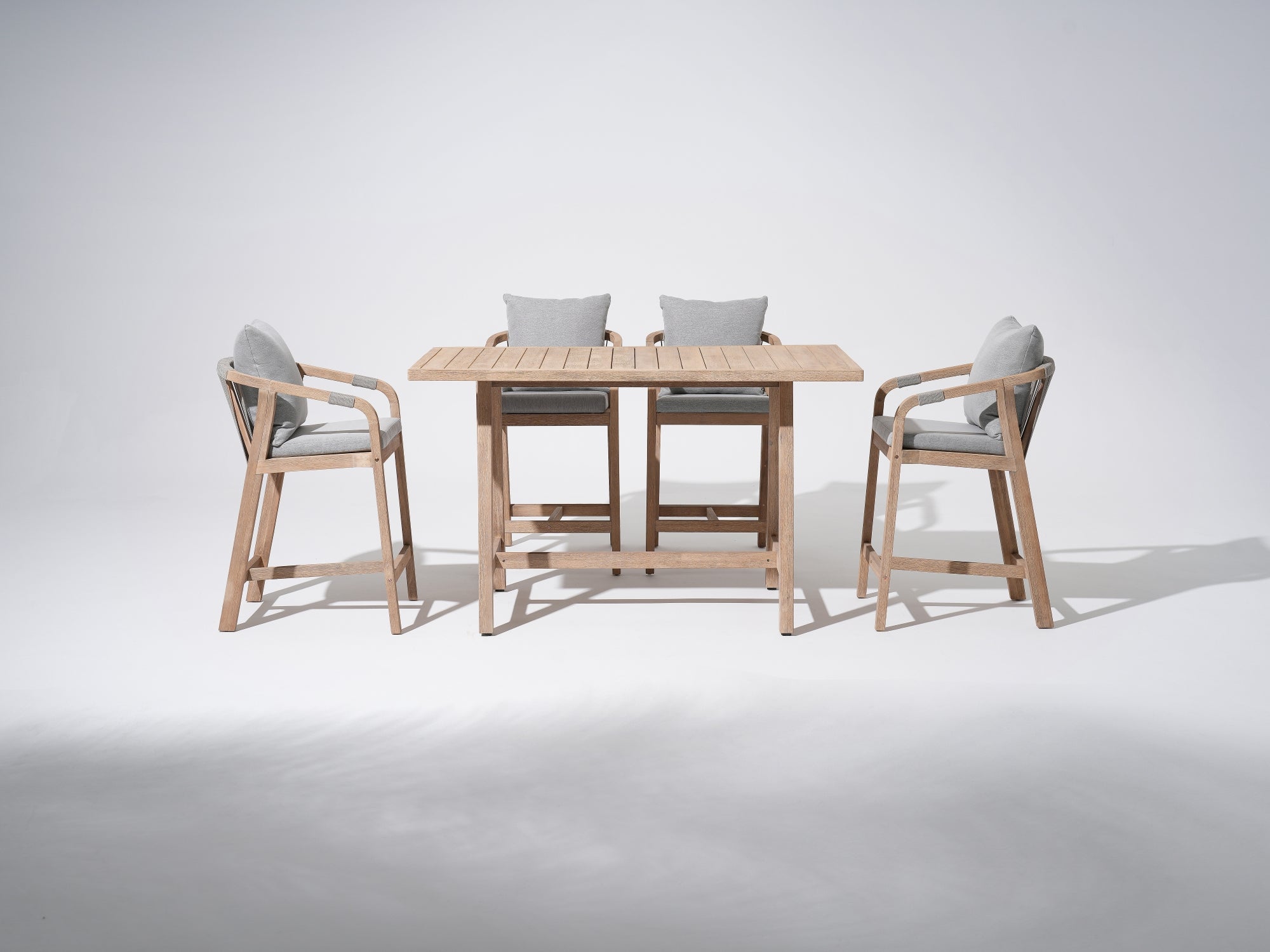When shopping for furniture, many people may not be familiar with what “wicker” actually is. Surprisingly, “wicker” refers to a weaving process rather than a single specific material. Wicker furniture is not limited to natural materials; it can be made from both natural and synthetic materials that are durable and flexible enough to be woven into furniture pieces.
In short, the term “wicker” refers to a variety of vines, grasses, and plants used in the weaving process. Another important point to remember is that wicker furniture is not just for outdoor use. It can seamlessly fit both indoors and outdoors. However, depending on where the furniture will be placed, the materials used in its construction will vary.
Differences Between Indoor and Outdoor Wicker Furniture

Outdoor wicker furniture typically uses synthetic materials like vinyl and resin because it needs to withstand harsher conditions, such as moisture, sunlight, and extreme dryness, depending on the climate.
Indoor wicker furniture, on the other hand, is often made from organic and natural materials. Since it is placed in a more protected environment, it doesn’t require the same level of weather resistance.
The Wicker Weaving Process

When it comes to construction, both organic and synthetic materials use similar weaving techniques. This results in a visually appealing wicker design, regardless of the materials used.
You can find wicker furniture in a wide range of styles and weaves, from highly modern pieces to more traditional ones. Wicker furniture is also available in numerous colors, including natural tones, white finishes, and other shades that suit your style.
Materials Used in Wicker Furniture
Wicker furniture can be made from a variety of materials, each suited to specific uses.
Indoor Wicker Furniture

There are four primary organic materials used for indoor wicker furniture:
- Rattan - The most common material for indoor wicker furniture, rattan is a thin, flexible palm that is popular due to its versatility. It is often used not only in weaving but also for the furniture frame.
- Reed
- Willow
- Bamboo
While beautiful and natural, these materials should not be used outdoors. Excess moisture and intense sunlight can cause organic materials to deteriorate. Once the material dries out or wears down, the furniture can quickly become unusable.
Outdoor Wicker Furniture

Unlike indoor wicker furniture, outdoor wicker pieces are typically built with aluminum frames and woven using synthetic materials, such as:
- Synthetic Resin
- Vinyl Fibers
These materials preserve the classic wicker look but offer greater durability. Aluminum and synthetic wicker can withstand moisture, sunlight, and extreme temperatures, making them ideal for outdoor environments.
Caring for Wicker Furniture

Proper care is essential to ensure your wicker furniture remains beautiful and functional for years to come. Here are a few tips for maintaining your wicker furniture:
For Outdoor Wicker
- Keep It Dry: Even though synthetic materials are weather-resistant, moisture can still lead to mold and mildew. Wipe down your furniture after rain or anytime it gets wet.
- Protect It From Direct Sunlight: Prolonged sun exposure can cause certain types of wicker to split or fade. Placing the furniture under a large umbrella, in a shaded area, or on a covered patio can help.
- Clean Regularly: Use a soft brush or cloth to clean the furniture periodically. This prevents dust and dirt buildup.
- Dust Often: Regular dusting with a soft cloth or vacuum cleaner attachment will help preserve its look.
- Avoid Excess Moisture: Even for indoor wicker, avoid placing it in damp environments to prevent warping or mold.
- Occasional Touch-Ups: If needed, repaint or re-seal natural wicker furniture to keep it looking fresh.



